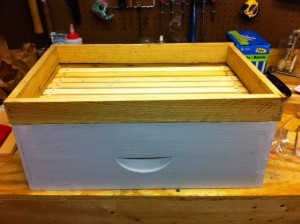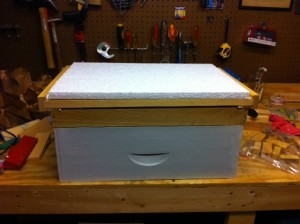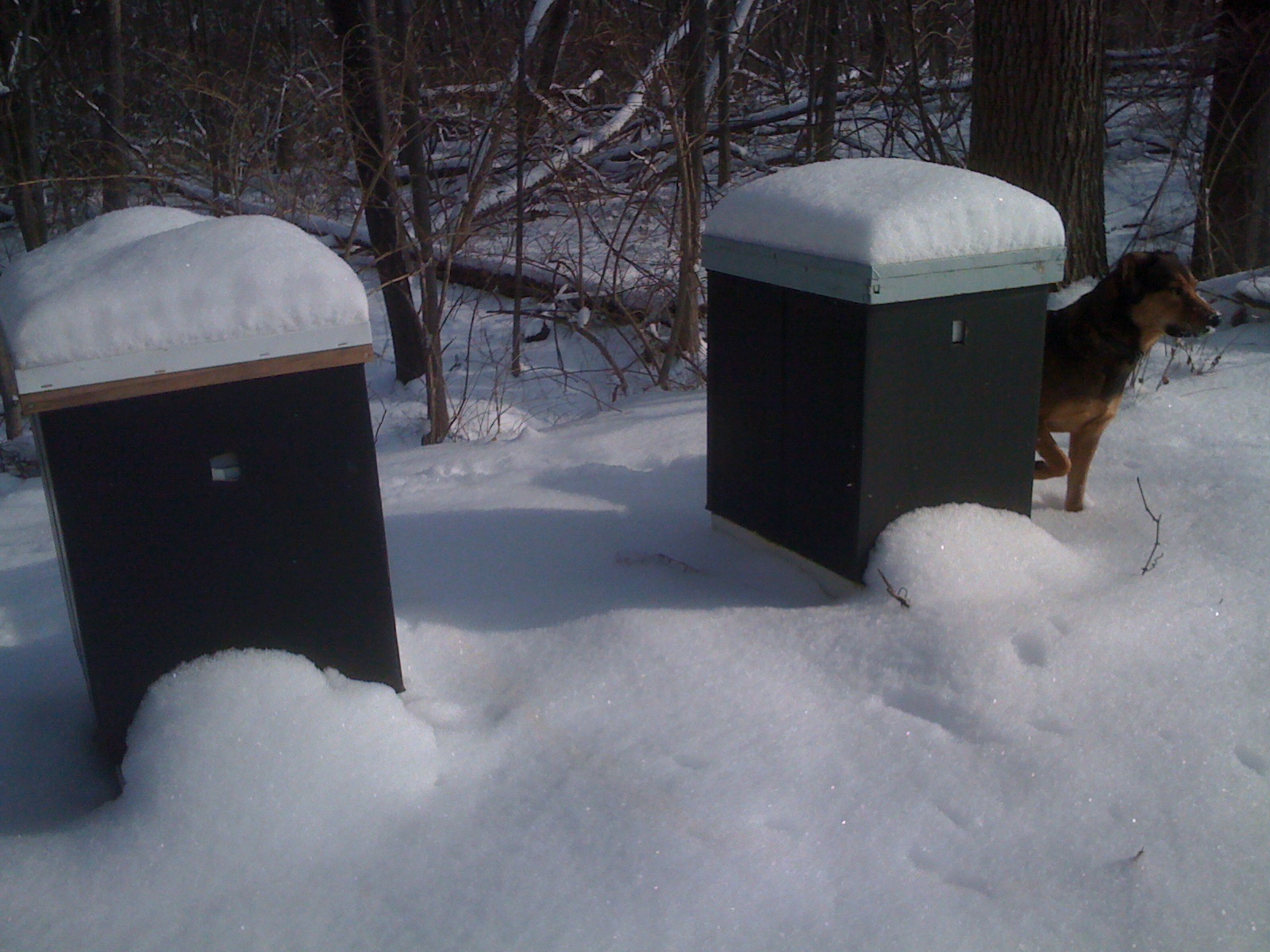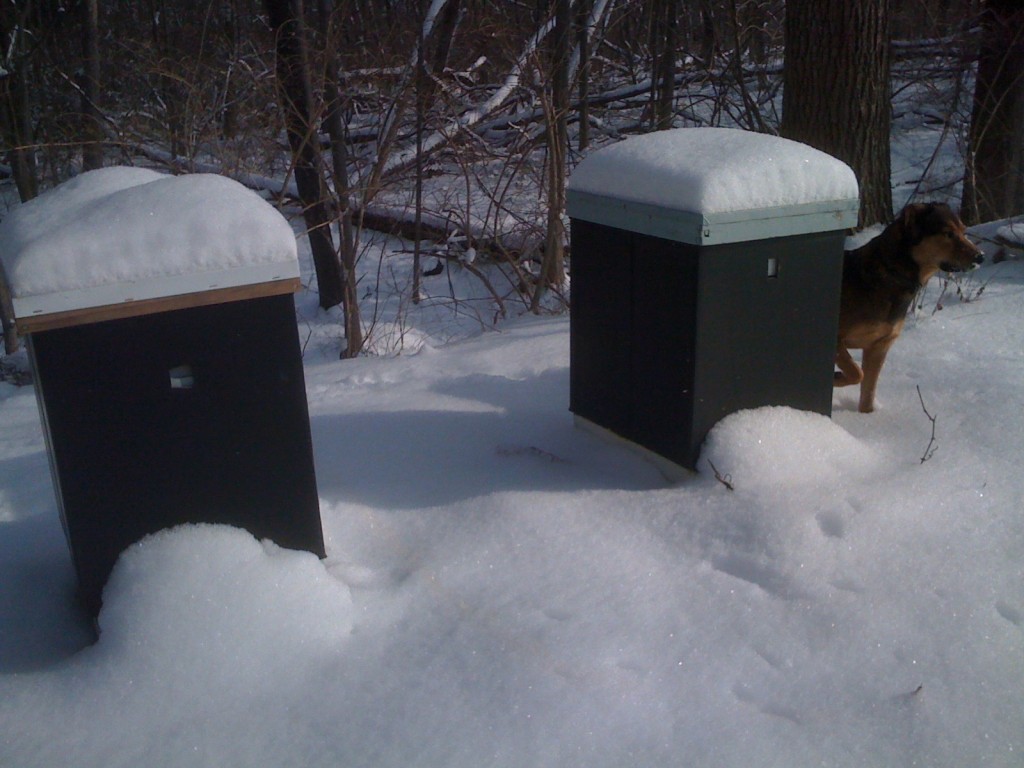

Preparing the Hives for Winter
Reader, I thought you might like to see how I plan to winterize my hives. I’m probably a week or two late with these preparations—it’s already getting chilly, and I want to give the bees time to propolize the shim so cold air doesn’t come blowing in, but there’s the plan:
This is the top hive box (it’s a medium-depth, 8-frame hive body):

I built shims from scrap lumber to fit atop each hive. The shims are 2″ tall which allows me an extra 2″ on top of the hive in which I can place dry sugar. I’ll spread newspaper on top of the frames. Then, I’ll pour dry sugar (to which I’ll spray water so it lumps together…the bees don’t love the little granulations). If the bees eat through their stores and the sugar, I’ll add cakes of bee candy in the spring, and the 2″ gives me ample room for that. Also, the two extra inches on top of the hive isn’t difficult for the bees to heat.

Next goes the lid. On the bottom of this migratory cover (you can buy these 8-frame, reversible, migratory covers from Rossman Apiaries), I glued thin shims I find at the hardware store (I go through a LOT of these cedar shim slivers. I use them for everything!)…this lifts the lid ever so slightly and gives the bees their upper entrance. An upper entrance helps moisture escape from the hive in the winter…which reduces condensation on the lid…condensation that then drips drips drips on the cluster of bees and freezes them. Got it?

I found packages of Styrofoam sheets in the insulation aisle of Home Depot, and I cut the sheets to fit the lids. Yes, I hate to contribute more Styrofoam to the world. But the bees want a bit of top insulation (so long as there’s also a way for them to release the moisture that results). These do the job and are weather resistant. I intend to use them for years and years. Forgive me.

And, finally, the rock that keeps it all in place. You gotta love the rock: It resolutely stands there in every weather and does its quiet job.


Isn't Snow a Good Insulator?
Before I could get a new, officially sanctioned entrance reducer in place (okay, I admit it…I haven’t even ordered it yet), snow covered the entrance to both hives. And snow’s supposed to be a great insulator, right? So, I guess things are toasty in there. I hope these bees can stand my hands-off approach.

Stay Warm, Please
See those black cardboard boxes on yesterday’s post? The ones I used to cover the hives? Not only do those boxes add a layer of insulation, but the blackness absorbs the little sunlight we have here in the Ohio River Valley…and that keeps the bees warmer. My hope is that the warmer they are, the less food they need to eat…because it takes food to make enough energy to stay warm. Hang with me, girls.

